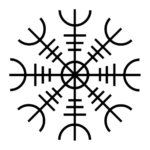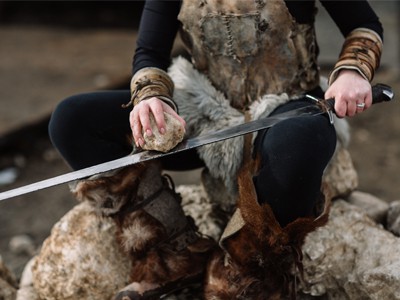No products in the cart.
After the Nordic Iron Age...
The Viking Age took place between the 8th and 11th Century and was a time of tremendous economic and religious transformation that resulted in the integration of Christianity in Scandinavian society. It was a phase between pre-christian culture and the middle Ages of Scandinavia and human trading, exploration and expansion from Norway to the North-Atlantic Islands, from Denmark to England, Ireland and France as well as from Sweden to Russia.
Life was tough and hard in Scandinavia, one of the main activities during the Viking Age was the production of food such as fishing and farming. Trading and expansion as far east as Volga to Russia, the Middle East and Newfoundland became part of the great success during the Viking Age, however, the exact reasons on why they have left their homeland in Scandinavia is still up to debate; it might have been due to social and political changes.


If we study the etymology of the very word “Viking”, we come to a closer understanding of what it meant to be a “Viking”. The most plausible and accepted hypothesis is, that the word “Viking” is derived from the Proto-Nordic “Wikan” which translated into “to move, or to turn”, implying the nautical knowledge and capabilities of early medieval Scandinavians who went abroad for trade, expansion and exploration. Thus it is highly likely that the word Viking comes from Wikan and “Vika”, which also translates into “sea-mile”, again, putting emphasis on nautical sea-faring.
z

Not all Scandinavians went abroad. Many regional and local differences in culture, dialect and also heritage apply here. Thus, we can see that early medieval Scandinavians were all Norsemen, but they were not all “Vikings”, as the very word does not refer to ethnicity, religion, faith or heritage.
Rather, it is a term in reference to ones status and occupation. To go on a Viking meant, someone from Scandinavia will move abroad – for whatever reason, but he will be sea-faring, thus his status and occupation is that of a “Viking”.
Proto Germanic (which shifted from Proto-Indo-European; Grimm’s law) diversified during the Pre-Roman Iron Age and gave rise and birth to Proto-Norse until Old Norse was spoken during the Viking Age. Old Norse split up again into an Eastern and Western branch. If we study the historical context, we can see the rise of tribes such as Jutes, Danes and Angles in what today would be Denmark. In Northwest Germany, we will find the Frisians and in southern Sweden, we will find the Geats, Swedes and Warini (Suevi) in southern Sweden. Historically, all tribes of the North Germanic people could have been referred to as Normanni, the Norsemen. However, some were closely related but not the same, as is the case with the Goths and Geats.
The Old English poem “Widsith” from the 10th Century can give some insight into these tribes. They are the Ancestors of the medieval North Germanic tribes that went abroad “on a Viking”. A brave, strong and very fascinating culture and period in time, for sure. The sheer amount of influence during the Viking Age – of sea-faring Scandinavians – made them feared and respected. And even though there were indeed many raids, we must be careful with tales of them being aggressive, fierce warriors. These legends were often heavily influenced by the Church and they do not tell us much about their actual culture or beliefs. The reason is that everything outside of Roman-Christian Civilization was deemed as “barbarian”. There was political gain in making them appear as if they were mainly primitive and aggressive. Many medieval Scandinavians were simple people, farmers, fishermen and craftsmen.




